Impedance-pH reflux patterns in patients with non-erosive reflux disease

Valeria Kaibysheva*, Alexander Trukhmanov, Vladimir Ivashkin
First Moscow state medical university, Moscow, Russian Federation
Aims:To assess acid and non-acid reflux patterns in patients with non-erosive reflux disease (NERD) and erosive reflux disease (ERD) using combined esophageal pH-impedance monitoring.
Metods:90 patients with NERD (67,6%) and 43 patients with ERD (32,3%) were underwent ambulatory 24-h esophageal pH-impedance monitoring.
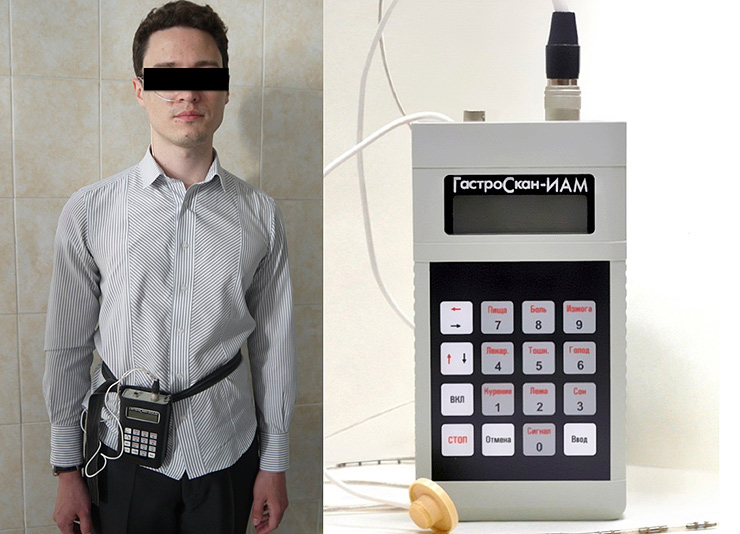
Results: esophageal mucosa's exposure to reflux volume during 24 hour period was similar in both ERD and NERD patients (3.8% vs. 3.1%, p>0.05). Reflux-related acid exposure (pH drops (pH<4) associated with reflux detected by impedance) and reflux-related alkaline exposure (pH elevation (pH>7) associated with reflux detected by impedance) in ERD patients was higher than in NERD patients (p<0.05).
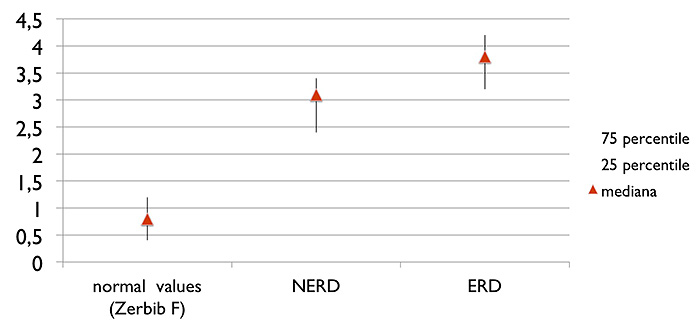
Fig. I. 24-h total bolus exposure in ERD and NERD patients
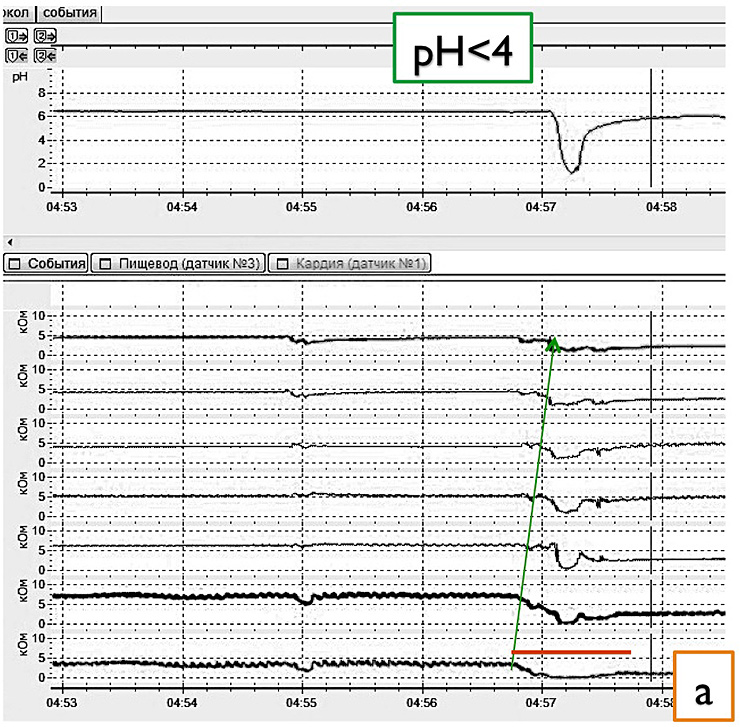
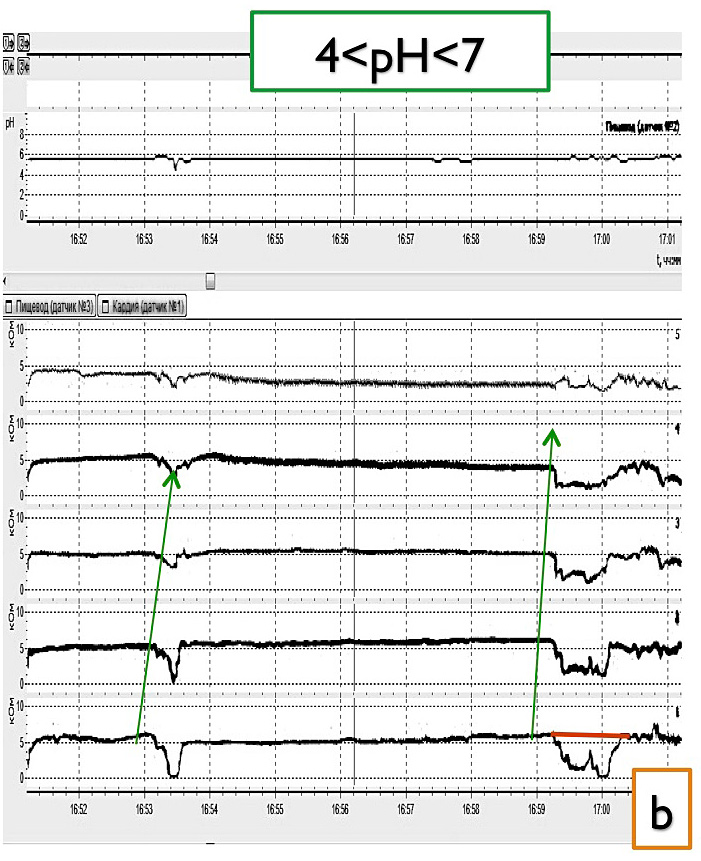
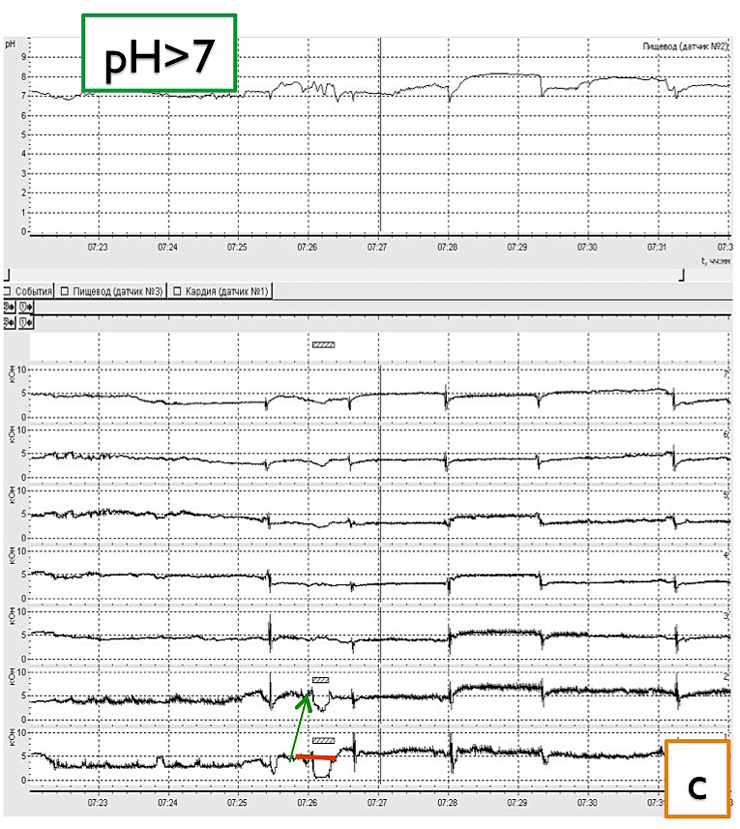
Fig. II. Combined impedance-pH recordings allows to identify the three types of reflux:
- Liquid acid reflux: retrograde drop in impedance starting distally together with a pH fall below 4
- Liquid weakly acidic reflux: retrograde drop in impedance starting distally together with a pH fall below 7 but above 4
- Liquid alkaline reflux: retrograde drop in impedance starting distally with pH values above 7
Table I. Reflux-related acid, alkaline and weakly - acid exposure in ERD and NERD patients
|
|
NERD Median (25th,75th) |
ERD Median (25th,75th) |
P |
|
Reflux-related acid exposure, per cent time (%) |
1.08% (0.5; 1.9) |
2.2% (1.6; 2.9) |
<0.05 |
|
Reflux-related alkaline exposure, per cent time (%) |
0.13% (0; 0.49) |
1.3% (0.8; 1.7) |
<0.05 |
|
Reflux-related weakly - acid exposure, per cent time (%) |
1.08% (0.46; 1.86) |
0.04% (0; 0.2) |
<0.05 |
Median acid (chemical) clearance time was twice longer in ERD patients (120 (76; 166) s.) in comparison to NERD's (60 (49; I 16) s.) group. There was no significant difference in median volume clearance time between ERD and NERD patients (23.3 (20.3; 27.6) vs. 19.1 (16.2; 23.6) s, p>0.05).
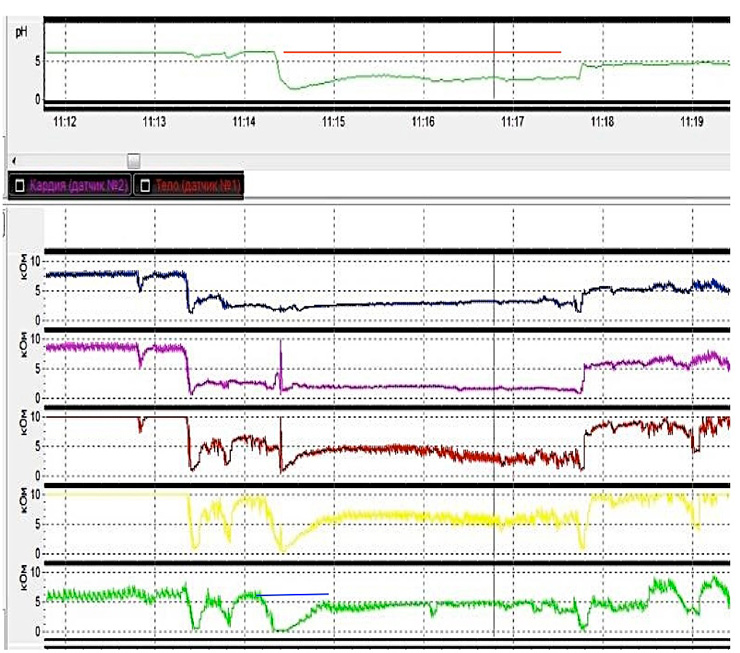
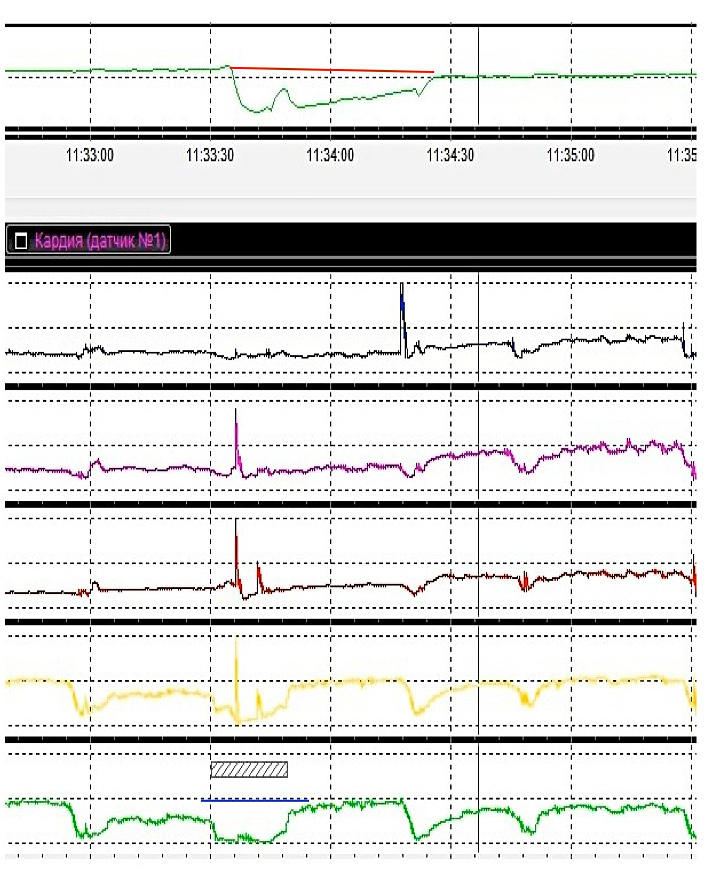
Fig. III. Chemical (red line) and volume (blue line) clearance time in ERD (left picture) and NERD (right picture) patients
Conclusion:Total esophageal bolus exposure is similar in non- erosive reflux disease and erosive reflux disease, but the reflux pattern in ERD and NERD patients is different. Patients with erosive reflux disease have an increased level of reflux-related esophageal acid and alkaline exposure and long duration of chemical clearance. Patients with non-erosive reflux disease have increased level of reflux-related esophageal weakly-acid exposure and nearly normal duration of chemical and volume clearance. This observation tends to support a notion that weakly-acid reflux (4<pH<7) is less damaging to esophageal mucosa than acid (pH<4) and alkaline (pH>7) reflux.
1. Zerbib F, des Varannes SB, et al. Normal values and day-to-day variability of 24-h ambulatorreflux-related weakly - acid exposurey oesophageal impedance-pH monitoring in a Belgian-French cohort of healthy subjects. Aliment Pharmacol Ther 2005; 22:101 1-1032.
* Copyright © 2014 Kaibysheva V.O. valeriakai@mail.ru